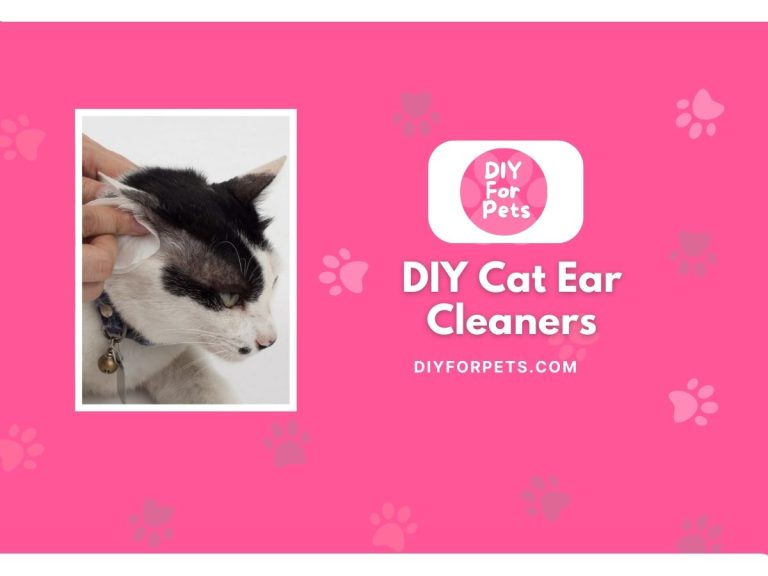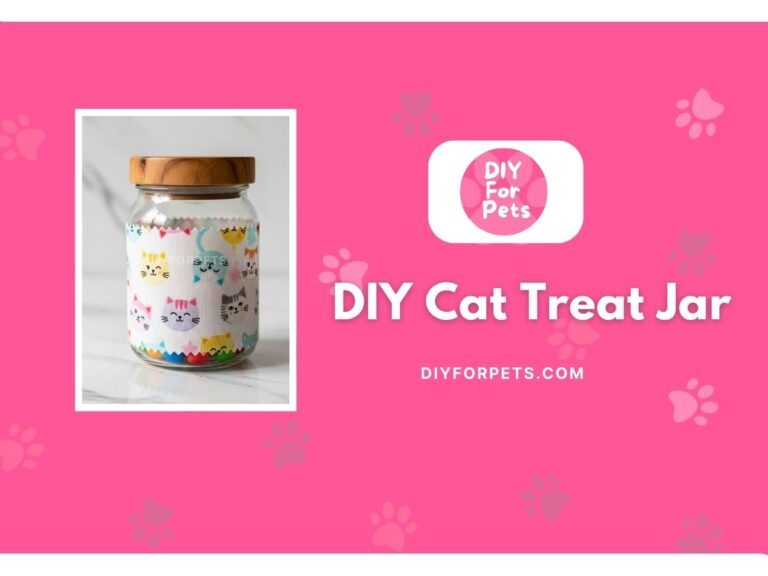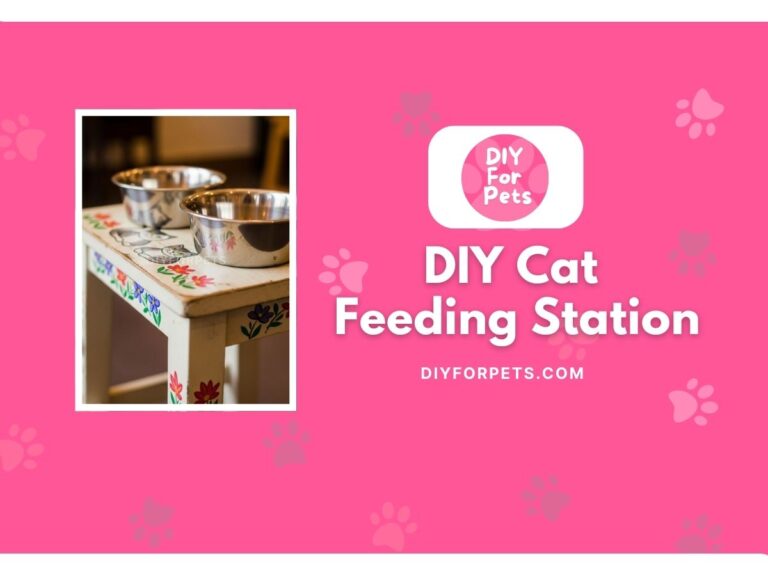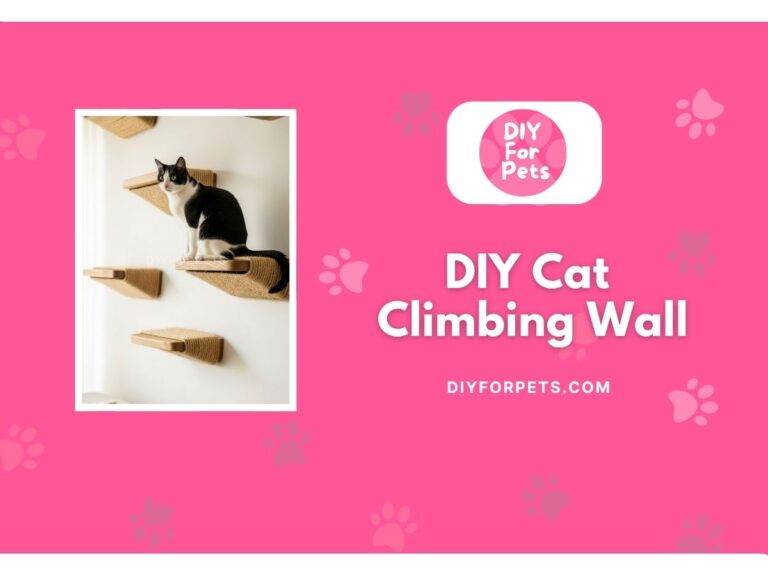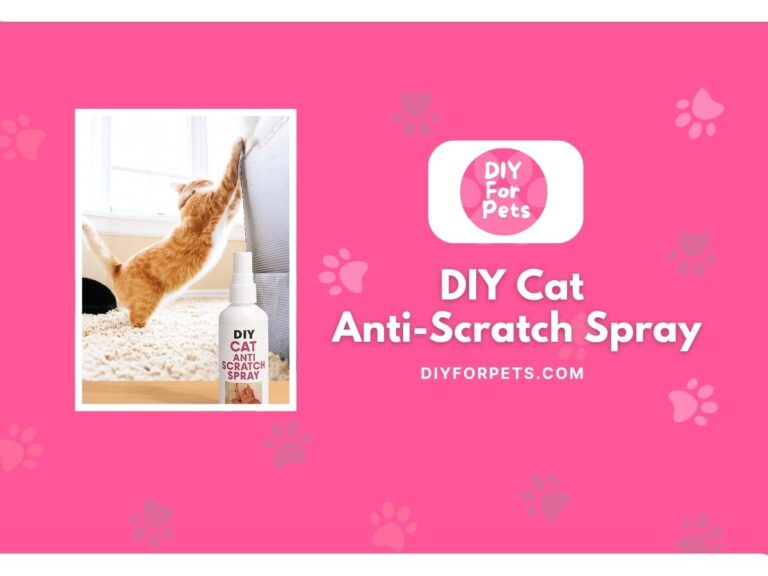4 DIY Cat Brush To Groom At Ease (Beginner Friendly)
With a house full of pets, from curious cats and playful dogs to fluffy rabbits, grooming has become a routine part of my life. Cats, in particular, have their own special grooming needs, and while they’re known for keeping themselves fairly clean, a little extra help goes a long way. Plus, DIY projects give me a chance to get creative and make something truly unique for my pets. That’s why I decided to try my hand at creating some easy, budget-friendly DIY cat brushes. These brushes keep my cats’ coats sleek and reduce shedding, which helps keep my home a little tidier!
Do Cats Need Grooming?
Even though cats are known for their self-cleaning habits, they still benefit from regular grooming, especially if they have long or thick fur. Grooming helps remove loose hair, prevents matting, and keeps their coat healthy. It’s also a great bonding activity, and I’ve noticed that my cats love the attention (as long as they’re in the mood for it!). Grooming also reduces shedding around the house, making it a win-win for both the cats and me. DIY cat brushes are simple to make, and they give you the chance to create a brush that matches your cat’s specific grooming needs.
DIY Cat Brush: Step by Step
Creating a DIY cat brush doesn’t require any fancy materials—just a few basics you likely already have at home. These homemade brushes work well for cats with different coat types and give you an affordable alternative to store-bought brushes.
Materials Needed
- Old toothbrush or small, soft brush: Free or $1
- Rubber gloves with textured fingers: $1–$3
- Self-adhesive velcro strips: $3
- Fleece or soft fabric scraps: $2
- Glue gun or sewing kit: Already have this!
Total cost: Around $5–$7 if you need to buy any materials, but it’s likely you’ll find most items at home.
Phase 1: Choosing the Right Brush Base
The base of your brush can be a simple tool like an old toothbrush, rubber glove, or a piece of soft fabric that you can add texture to. Decide based on your cat’s preference—some cats prefer soft brushes, while others like a bit more texture.
Phase 2: Adding Texture and Comfort
To make your brush gentle but effective, add materials like fleece, velcro, or rubber to create texture. Cats love the feeling of a textured brush on their fur, which mimics the feeling of being groomed by their own tongue.
Phase 3: Assembly and Testing
Once your brush is assembled, gently test it on your cat’s fur. Observe their reaction and make adjustments if needed. Remember, the key to a successful DIY cat brush is comfort, so go with a light touch and observe what they enjoy.
3 Easy DIY Cat Brush Ideas
Here are three fun, easy-to-make cat brush ideas that you can put together in minutes. Each one is affordable, customizable, and sure to make grooming a relaxing experience for your cat.
1. Rubber Glove Brush
This DIY brush couldn’t be easier. Take a rubber glove with textured fingers, and put it on. Simply run your gloved hand over your cat’s coat in gentle, sweeping motions. The textured rubber picks up loose hair and creates a comforting sensation for your cat. Plus, it’s an interactive experience since your cat gets to enjoy some direct hand-on-fur action, which they seem to love.
This brush costs just $1–$3 for a pair of gloves and works well for cats with short or medium coats. The rubber grips onto loose fur without pulling, making it a gentle option for cats who may be sensitive to traditional brushes.

2. Old Toothbrush Soft Brush
If you have an old, soft toothbrush lying around, it can make a great DIY cat brush, especially for delicate areas like the face and under the chin. Clean the toothbrush thoroughly, then gently use it to brush around your cat’s head and neck. The small bristles are soft and gentle, mimicking the fine texture of a grooming brush while allowing you to get into tight spaces.
This option is basically free if you’re reusing an old toothbrush and is perfect for cats with sensitive skin or those who don’t like intense grooming. The small bristles do a great job of picking up loose hair around the face, which can reduce shedding in areas that often get missed.

3. Velcro Strip Fabric Brush
For a DIY brush with a little more texture, grab a self-adhesive velcro strip and attach it to a piece of fleece or soft fabric. Wrap the fabric around a small, lightweight object like a wooden spoon or stick for easy handling, and then gently brush your cat with the velcro side. The soft bristles on the velcro grip loose fur while the fabric backing keeps it soft against your cat’s skin.
This brush costs around $5 to make and works wonderfully on cats with thicker coats that need a little more attention. The velcro adds just the right amount of friction to pull away dead hair without causing discomfort, making it ideal for regular grooming sessions.

Dos & Don’ts in Cat Brushes
- Do: Start with gentle strokes and observe your cat’s reaction. Some cats take time to warm up to brushing.
- Do: Clean your DIY brushes regularly, especially if they pick up a lot of hair.
- Don’t: Use brushes with very stiff bristles that could irritate your cat’s skin.
- Do: Pair grooming with treats or petting to create a positive association.
- Don’t: Brush against the natural direction of the fur, as this can be uncomfortable for your cat.
FAQs About DIY Cat Brushes
1. How often should I groom my cat?
Most cats benefit from brushing a few times a week, but long-haired cats may need daily grooming to prevent matting.
2. Can I use a regular hairbrush on my cat?
It’s best to avoid human hairbrushes, as they’re usually too large and not designed for a cat’s coat. Opt for softer DIY options or brushes designed specifically for pets.
3. What should I do if my cat doesn’t like brushing?
Take it slow and try different types of brushes. Some cats may prefer a rubber glove over a traditional brush. Also, try brushing them when they’re relaxed or sleepy.
4. Are DIY cat brushes as effective as store-bought ones?
Yes, they can be! Homemade brushes with soft or rubber textures work very well and are gentle on your cat’s skin, making them an excellent alternative.
Creating a DIY cat brush is a simple way to bond with your cat while keeping their coat in tip-top shape. Not only are these brushes budget-friendly, but they’re also highly customizable to suit your cat’s preferences. So, give these ideas a try, experiment with different textures, and see which one your cat loves the most. Happy grooming!


